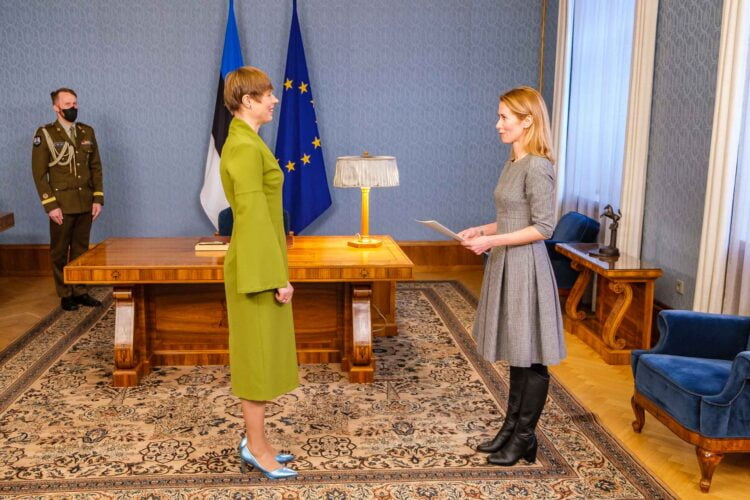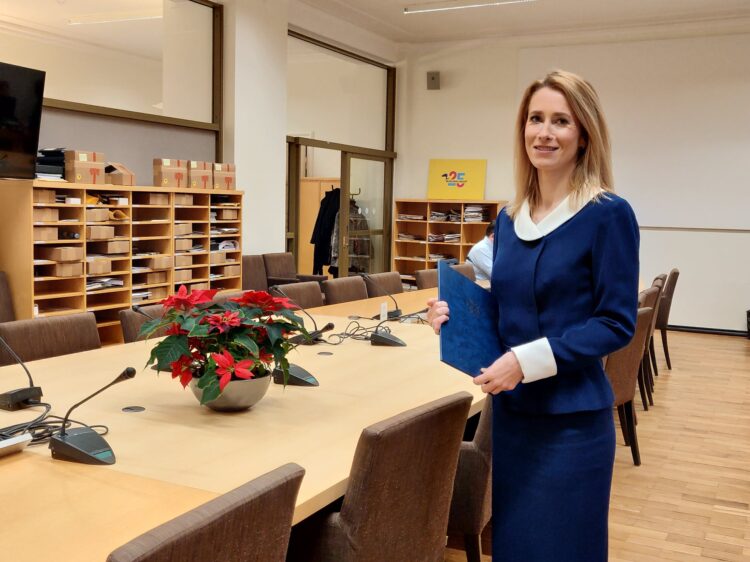On 26 January, at sunrise – 8:44 AM to be precise – Estonia became the only country in the world that’s currently led by women: both the elected president, Kersti Kaljulaid, and the elected prime minister, Kaja Kallas, are female.
The keyword here, though, is “elected” – there are three other countries where the head of state and the prime minister are both women. New Zealand and Barbados are led by female prime ministers and their common head of state is the sovereign of the United Kingdom and the Commonwealth – Queen Elizabeth II. Denmark is also led by a female prime minister; its head of state is another monarch, Queen Margrethe II.
The current Estonian president, Kersti Kaljulaid, was elected by the country’s parliament in 2016, thus becoming the first woman to ever hold the office of the president of Estonia.
And from 26 January onwards, the Estonian head of government will be Kaja Kallas, the current leader of the Reform Party, who will be the first female prime minister of the country. Kaljulaid nominated Kallas to form the government on 14 January – after the previous governing coalition, led by the Centre Party, collapsed – and the parliament confirmed her and her cabinet’s nomination on 25 January. Kallas will lead a coalition between her Reform Party and the center-left Centre Party.

Almost half of the cabinet will be female
Even though Kallas’s coalition has 59 MPs in the parliament, the new coalition was confirmed with 70 yeas and 30 nays, meaning 11 opposition MPs voted in favour of the Kallas cabinet. President Kaljulaid appointed the new government at sunrise on 26 January. On the same day, the cabinet ministers took an oath of office before the parliament.
Kallas was expected to become prime minister already in 2019 after it won the general election with 34 MPs; however, the Centre Party formed a coalition with the far-right populist Estonian Conservative People’s Party and the centre-right Isamaa. That government collapsed after the Estonian Public Prosecutor’s Office announced on 12 January it suspected the Centre Party and five individuals, including the party’s secretary-general, were involved in a corruption case. The chairman of the Centre Party, Jüri Ratas, who had been Estonia’s prime minister since November 2016, announced his resignation on 13 January.
It is notable that, including Kaja Kallas, the new Estonian government will have seven female ministers (46,7% of the cabinet) – a record for the country so far.

Kallas was born in 1977 in Tallinn and comes from a prominent family. Her father, Siim Kallas, became active in Estonia’s independence movement in 1987 (he was one of the four authors behind the idea for self-managing Estonia, IME, while the country was still occupied by the Soviet Union) and was one of the founders of the Reform Party. He also served as the country’s prime minister (2002-2003) and as a European Commissioner (2004-2014)
Finland beat Estonia to it in 2003
Kaja Kallas has a law degree from the University of Tartu and a master’s degree in business administration from the Estonian Business School. Before entering frontline politics, she worked as a lawyer. In 2011, she became a member of the Reform Party and in the same year, was elected to the Estonian parliament.
In 2014, she was elected to the European Parliament, and in January 2018, she became the Reform Party’s first female leader. Having given up her European Parliament seat, she led her party to a victory in the March 2019 general election.
Kallas is married and has a nine-year-old son from her previous partnership.

Estonia is not the first country to have a concurrent elected president and prime minister who are female. During the reign of the Finnish president, Tarja Halonen (2000-2012), she had two female heads of government – Anneli Jäätteenmäki (2003) and Mari Kiviniemi (2010-2011).
Sri Lanka has also had a female president and a female prime minister at the same time (president Chandrika Kumaratunga 1994-2005 and prime minister Sirimavo Bandaranaike 1994-2000); however, Sri Lanka’s president is both the head of state and the head of government, the prime minister is the deputy head of government.
Join OUR TELEGRAM GROUP.






